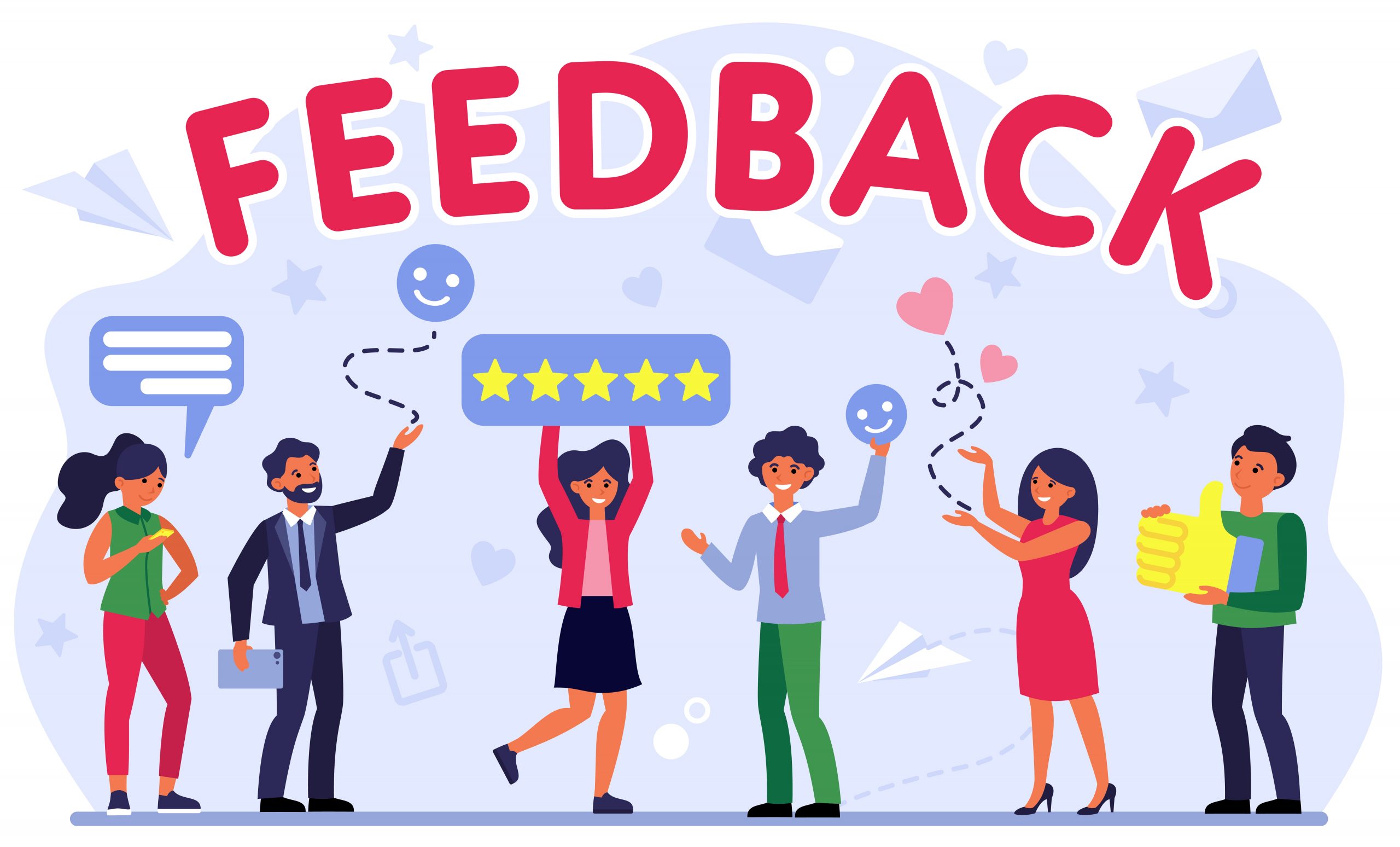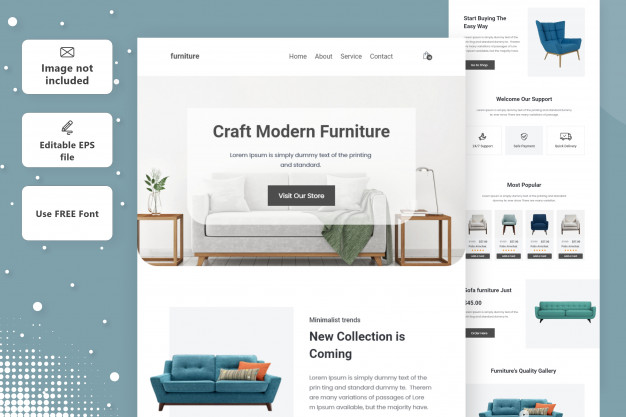In a crowded marketplace, fitting in is a failure. In a busy marketplace, not standing out is the same as being invisible. – Seth Godin
Tremendous growth has been seen in the B2B eCommerce industry in the past several years. As a matter of fact, B2B eCommerce sales reached $1 trillion back in 2018 and according to Forrester – the annual growth rate – will increase by 10% in the next 5 years.
However, last year was a gruesome year for the whole world as industries were shut down, people were restricted to their homes, and borders were closed. Accordingly, thousands of B2B organizations who were following the ancient B2B business model have been terribly suffering from revenue shortfall.
On the other hand, companies like Bedford industry took advantage of this disruption and boosted their conversion rate by instantly launching their eCommerce website.
No matter the sales rate is going down or up, economic downturns may bring ample of great opportunities. However, to fully cash this golden opportunity, it’s essential to layout new and better B2B eCommerce marketing strategies.
In the past few years, the marketing strategies of B2B eCommerce have absolutely changed. Running a boring, bland, and old-school marketing campaign isn’t acceptable anymore and it won’t help you in boosting your conversion rate.
Therefore, upgrading marketing strategies is essential for B2B organizations if they want to stay competitive and relevant in this industry particularly in such crucial conditions.
Don’t freak out after reading these facts. In this article, we’ll discuss 5 B2B eCommerce marketing strategies that can substantially boost your eCommerce conversion rate.
So let’s get started!
Investing in content marketing strategy
Undoubtedly, content is the king. An excellent copy of content is capable of improving visibility, bringing in more clicks, educating visitors and inspiring them to convert them into consumers.

In the B2B eCommerce space, content plays an integral role. Unlike B2C customers, B2B buyers are not leisure shoppers. Before investing their resources, they conduct research to find out whether your offered solutions can address their pain points or not. A B2B buyer on average goes through at least 13 pieces of content before choosing a vendor.
The average B2B buyer’s journey involves consumption of 13 pieces of content… The 13 content pieces break down into an average of eight vendor-created pieces and five from third parties… The top source of content was the vendor’s website, followed by search and social media.
In order to create an effective content marketing strategy, you need to craft excellent content that adds more value to your products and services.
To do so effectively, various type of content should be crafted, including:
- Blog content – to increase the search engine rankings of your website, it’s essential to update high quality content composed of relevant keywords to build brand awareness and generate leads by properly educating your prospects to improve the conversion rate.
- Video content – video is one of the most engaging types of content. Around 83% marketers reported that video content helped them to generate more leads and boost their conversion rate. Moreover, customers feel more confident while purchasing a product when it’s showcased through video content.
- Premium content – case studies, webinars, whitepapers, to name a few are tremendously valuable to B2B buyers and work as robust lead generation tools.
To recapitulate, B2B content marketing plays a significant role in this industry. However, creating content is not enough.
Focusing on customers’ benefit
While writing product descriptions, one thing every B2B marketer must do is to highlight all the benefits that your product offers.
Usually, merchants only list-out the features of their products instead of pointing out the benefits it brings to the table.
Instead of writing ‘water-proof machine ’, write something like ‘the machine is designed to be dishwasher safe to save your valuable time’.
Phrase your product information in a way that buyers find it appealing and it encourages them to add it to their shopping cart.
Featuring testimonials and reviews
The impact of testimonials and reviews should never be trivialized. Simply put, customers both B2B and B2C purchase from those brands that have a positive reputation in the market.
And as we all know, a brand’s reputation is based on what its current and past customers have to say about it.
As everything has shifted on a virtual platform, shoppers cannot touch, smell, or feel products when they are browsing online, they majorly depend upon what a brand is claiming and what its customers are saying.

This is why so many eCommerce merchants leverage testimonials and reviews to improve conversion rate.
In the B2B eCommerce space, buyers heavily rely on testimonials and product reviews as they are professional buyers who are not purchasing for themselves but for their company/organization.
B2B buyers demand for quality products, short checkout process, timely shipping, and outstanding customer service.
To compile testimonials and product reviews, B2B marketers should follow a few steps:
- Send follow-up emails to buyers to see if they’re interested in giving honest feedback about your products and services and overall customer experience.
- Respond to customer feedback proactively, thank them for it and ask them if they need any further assistance.
- Use the top testimonials smartly by publishing them on landing pages or homepage of your website.
- Also, reward your customers to motivate them to leave honest feedback of their experience with your company.
Optimizing user experience
Conversion rate optimization also known as CRO is a crucial B2B eCommerce marketing strategy for boosting sales. Being a seller, you have no idea how your prospects and customers are interacting with your site, improving sales in a viable way is extremely challenging.
Therefore, B2B merchants should leverage eCommerce marketing tools to max out the generated revenue.
Using such tools helps marketers to record user engagement, create heatmaps, build better sales conversion funnels, etc.
Starting loyalty programs
Loyalty programs play an integral role in building an effective marketing strategy. B2B consumers are not buyers who shop from you once or twice. Instead, they look for brands who’re capable of providing them quality services in the long-run.

For this purpose, it’s essential to leverage a dynamic loyalty program to boost sales conversion. Before starting one, it’s important to properly formulate a plan. Offering them something minute against their massive investments will not suffice.
Therefore, offer them something out-of-the-box which they cannot say ‘NO’ to. Marketers should think deeply before starting a loyalty program for their regular customers.
Here are some of the common loyalty programs that you can apply to your business:
1. The points program
This kind of loyalty program will encourage customers to buy more and earn more reward points. Every time a customer shops, he/she receives reward points depending upon the amount they have spent.
2. The paid program
Inviting customers to pay a monthly/ annual fee to get access to VIP customer’s cub is called a paid loyalty program. To implement a paid program, you need to have a lot of frequent buyers or existing customers. As new customers usually feel hesitant to join a new reward program unless you’re a recognizable brand.
3. The tier program
This loyalty program primarily focuses on a customer’s loyalty to a brand. The more loyal you’re the more points you’ll receive. It’s a great marketing strategy to encourage your existing customers to stay loyal with your brand instead of going to your competitors.
4. The subscription program
A new type of loyalty program that doesn’t offer rewards or points. Alternatively, customers are offered free products when they subscribe to this loyalty program. It’s an amazing program to motivate customers to stay with your brand for a long time.
Therefore, offering a loyalty program is a must if you want to improve the conversion rate of your B2B business.
Inspecting the front-end of your store
Having a modern, sleek and luxury design doesn’t matter in B2B space. Prospects care more about product quality and information you offer rather than the design. However, it’s not entirely true. Offering clear information encourages your buyers to contact you to discuss their pain points with you.
Your site is the first interaction that mostly prospects have with your company. The quality of your content, overall user-experience, product quality, customer service, and company are all important.
Since B2B buyers are not leisure shoppers, they will never invest in poor quality products as it might jeopardize their job. It means the B2B buyers take longer than B2C customers to make decisions. They first conduct in-depth research on your site.
Make sure your website inspires them instead of frustrating, confusing, or scaring your potential prospects away.

Update your site regularly and make the site design responsive that easily adjusts on different devices (smartphones, laptop, and tablets).
Also try to add real and professional images of your products, team, and office. Give a little custom touch to make your site more personal and relatable. Don’t use stock images as they give out very bad impressions.
Also try to simplify sitemap. A focused website is much better than stacking up hundreds of pages.
Check your forms, links, and buttons regularly to ensure everything is working properly. You also need to check your checkout payment process as well.
Provide additional information in the form of 3D models, datasheets or documents that would help prospects to analyze your services and products thoroughly.
Conclusion
Apart from these B2B marketing strategies, there are plenty other strategies that you can use to improve the conversion rate of your store. We hope this article will help you in improving the conversion rate of your B2B store and will bring great fortune to your company. Let’s join our community to get more eCommerce knowledge.